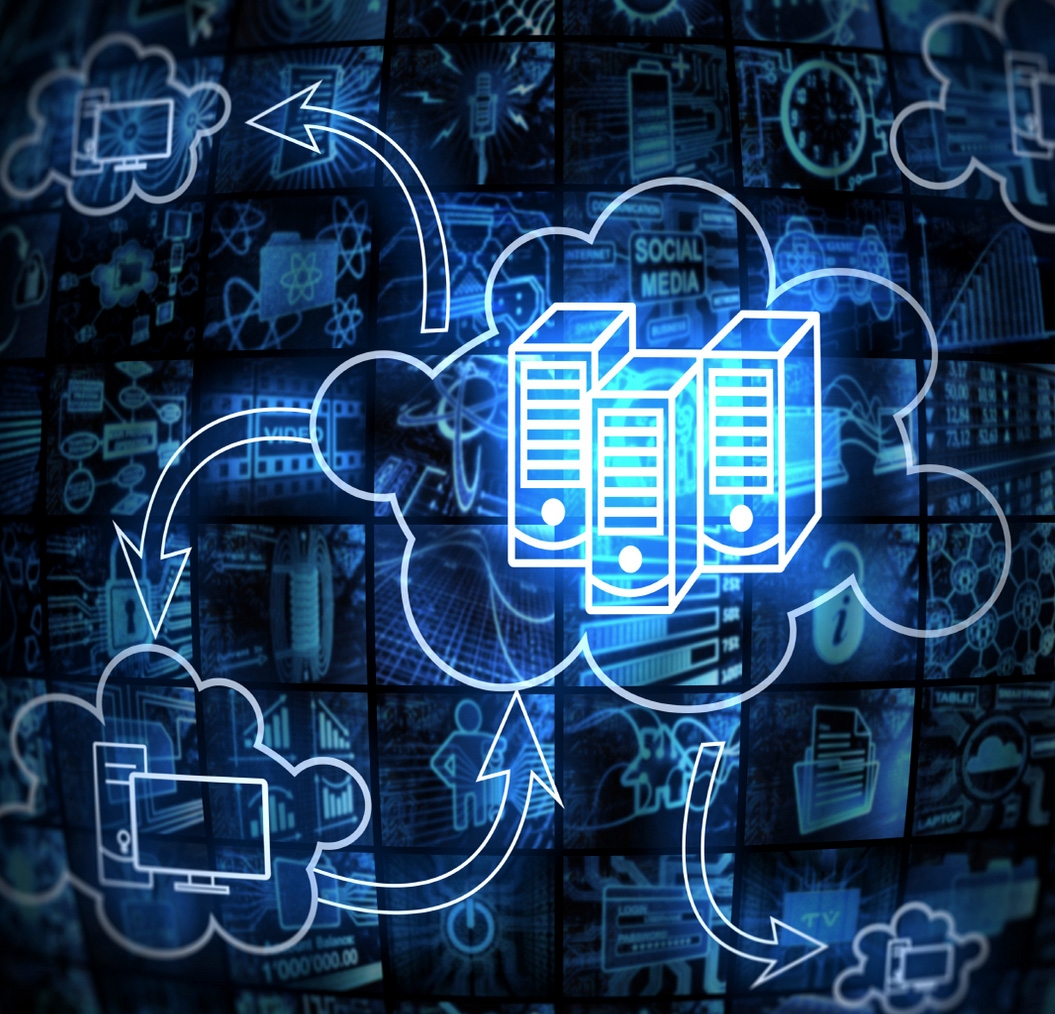
 The data center is still the cradle of technological innovation. Solutions and approaches used in engine rooms, are changing ever more rapidly while others, entirely new, are emerging to meet the changing needs of companies and organizations.
The data center is still the cradle of technological innovation. Solutions and approaches used in engine rooms, are changing ever more rapidly while others, entirely new, are emerging to meet the changing needs of companies and organizations.
Virtualization has definitely become an absolute necessity, while solid state drives (SSD) play an important role in the implementation of high-performance SAN virtual networks.
IT professionals should be prepared to implement the new products and trends that are appearing in this area, possibly to take them into account and to understand what impact these new products can have on their data centers and, consequently, on the business of ‘ company.
Data center: the 10 trends to keep in mind
THE following ten trends highlighted by analistinell’anno being that we will probably see the protagonists of the data center also during 2016.
1. Improving infrastructure to support the increased workload
Research by Gartner speaks of an annual growth rate of workloads that servers must handle 10%. Year on year, to process this data growth, companies have had to provide to make 20% more powerful than their own servers and increase by 35% the bandwidth of your network. But the most surprising is the increase, accounting for 50% of the capacity of the storage systems . These data clearly show that IT managers must follow and meet the trends of workloads that servers must handle, and then make available adequate resources to ensure a high level of benefits and services that do not slow down the daily activities of users.
2. Understanding the needs of the business units to make them more productive
Each business unit in the company needs to be agile and responsive in the market that competes. For the IT department, it is not always easy to develop this type of flexibility. The business units are thus brought to spend good slices of their budget to have, for example, mobile applications, cloud services or to allow employees to use personal devices. In years past this was within the shadow IT and was seen by buon’occhio by companies, just that this would solve all the problems related to the business. But lately, IT departments have realized that it is much more imported collaborate with business units to decide which technologies to integrate to meet the needs that emerge from this dialogue. Understand the business for IT departments is important to help and incorporate processes and tools that can make business units more productive and efficient.
3. Internet of Things, or Big Data millions
Internet of Things means actuators, sensors and dozens of integrated devices that provide an avalanche of data useful for the business. The efficiency tencologica brings IoT to multiply this type of objects connected and communicating. Gartner predicts that by 2020 there will be over 26 billion connected devices. The challenge for IT departments at the end of this year, but especially in the years to come, on the preparation, storage and correlation of this mountain of incoming data in real time from a multitude of sensors. The perfect management of these big data will allow the company to make decisions in real time, analyze trends and choose the best business strategy to be adopted in the short or long run.
4. The infrastructure software-defined benefit, but also a risk
Now all IT professionals have heard the term software-defined in various forms, from software-defined storage, via the software-defined networking (SDN), to the software-defined data center . This term indicates a new way to automate and manage the IT infrastructure through a special programming software. If full advantage of its potential, the software defined, can bring to the company several benefits, such as a faster and more flexible reconfiguration of the infrastructure from a single location, the improved performance of the workloads and traffic management network. If you prepare a Software-Defined Networking (SDN) poses no particular problem, the more complex the question of whether you decide to upgrade to a software-defined data center that is able to integrate data processing in the company and those outside headquarters. In addition, integrating infrastructure software-defined, provides a detailed study of a set of logic and rules that must be regularly reviewed and updated. The risk you run is to prepare an automation processes improper or ineffective compared to the needs that may change over time so the Governance is simplified but must be more vigilant.
5. The development of infrastructure iperconvergenti
Integrating infrastructure in data centers today is a trend known as Converged Infrastructure (CI). Infrastructure iperconvergenti are hardly new: the sector in recent years has become more and more interest on the part of IT professionals and will be increasingly taken into account in the coming years. The name of converged infrastructure (CI) is when, at the system level, you have the server, as well as providing network storage, provide components pre-integrated bundles from vendors that help centralize the management and control of a plurality of systems. Iperconvergenti platforms are constantly evolving and offer better performance, energy efficiency and manageability. But as so often is not all that glitters is gold. Choose the best platform iperconvergente for your business needs is not easy: the fact that they are more involved systems requires the involvement of several managers who need to move away from traditional metedo of choice which provides the best product that is used in the businss unit , but has to deal with the vendor for advice on the best product yes, but with a more global view of the company’s needs, not least bearing in mind what will serve in the future. In fact, you can hardly make another investment of this magnitude a second time if you change your IT infrastructure needs of the company.
6. Disaggregated systems
As is well known a data center is composed of a series of servers which in turn are composed of processor, memory, storage systems, and a power supply, all interconnected between them, a short  away from proprietary interfaces. If you need more processor speed or a larger amount of memory, rule or you buy a new more powerful server or replacing components that are used with other more current or increase the number of those already present. The idea of so-called disaggregated systems is to make a modular data processing by entrusting it to blocks of hardware components that can be used according to requirements. These blocks are connect to each other with high speed systems (for example, silicon photonics), and in the case of requirements such as an increase of the processing cycles may be inserted in the rack blocks of processors that will work in contemporary art. The new racks are reducing the number of power supplies that are used to make them work, thus improving energy efficiency and reducing the danger of failures of which are subject precisely the power supplies. The OCS (Open Compute Server) today have a single power supply that provides the necessary energy to multiple racks, and this will iun another trend for the coming years.
away from proprietary interfaces. If you need more processor speed or a larger amount of memory, rule or you buy a new more powerful server or replacing components that are used with other more current or increase the number of those already present. The idea of so-called disaggregated systems is to make a modular data processing by entrusting it to blocks of hardware components that can be used according to requirements. These blocks are connect to each other with high speed systems (for example, silicon photonics), and in the case of requirements such as an increase of the processing cycles may be inserted in the rack blocks of processors that will work in contemporary art. The new racks are reducing the number of power supplies that are used to make them work, thus improving energy efficiency and reducing the danger of failures of which are subject precisely the power supplies. The OCS (Open Compute Server) today have a single power supply that provides the necessary energy to multiple racks, and this will iun another trend for the coming years.
7. Infrastructure proactive
IT managers and business leaders rely on analytical tools to better understand the data center and the resources available for processing the data. These tools are essential to these figures in the company that have to make the best decisions about the use of data center and a possible system upgrades. The data center infrastructure management today help IT administrators to predict what will happen in the future, but the real evolution predicts that these analysis tools will provide the ability to prevent and anticipate problems and future needs and, more generally, will have the skills necessary to manage the changes.
8. Business continuity and disaster recovery: in one word IT Service Continuity
Business Continuity (BC) and disaster recovery (DR) were generally addressed as two separate issues and well separated. But these two issues are merging into a single activity which is called IT Service Continuity . Behind this merger is the fundamental objective and common that the two activities have, or maintain active essential services available to users. The idea of continuity of IT service takes shape when you can prevent potential disruptions, and you can then move workloads dynamically verses other data centers. This activity is often used by large companies that can trade, but very soon, certainly by next year, will be taken into account in other sectors.
9. A difficult cohabitation between preservation and change to improve
The IT department of a company typically has two major daily challenges to face: to ensure that all IT infrastructure functions properly and explore new technologies to improve the business. These two activities do not coexist very well because often efforts to have an efficient IT infrastructure going to clash with the search for new technologies that could block or slow down the IT ecosystem. But these two methods can and should coexist. And ‘right to preserve the processes, the procedures that have made possible a perfect IT management company, but at the same time it is equally important that you seek new ways to make some activities more streamlined and improve the business. Over time it is normal to study new technologies to the business through careful evaluation and testing. If we understand that technology is useful to improve the current situation, but it is still reliable at the point of being inserted within a data center, you can study the processes and alternative steps to manage it. One of these is the use of public cloud before a transaction within the IT infrastructure.
10. IT skills too poor
Too often in the company lack of IT professionals with the skills needed to improve IT infrastructure and business. Problems such as the increasing complexity of applications, the need for more assistance, development time cut to the bone, the shrinking budgets are putting a strain on IT staff. IT professionals should think outside of their mere skills, and confront increasingly thick with the other employees. Encourage staff to individual growth through training and cross-training is a good strategy to encourage loyalty IT professionals are therefore encouraged to stay longer in the company.
No comments:
Post a Comment